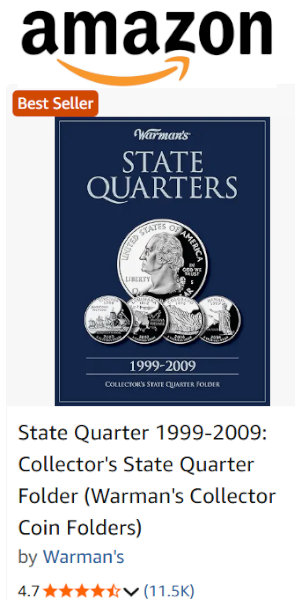Coin collecting is a fascinating journey into the world of numismatics that has enthralled enthusiasts for generations. Understanding the subtleties of coin valuation, particularly the important role played by grading, is essential for those participating in this hobby. Whether you are looking to dig deeper into your collection’s potential, or simply grasp the basics of numismatic valuation, this guide serves as a resource to navigate the complexities of coin grades and their impact on value.
Coin collecting is a fascinating journey into the world of numismatics that has enthralled enthusiasts for generations. Understanding the subtleties of coin valuation, particularly the important role played by grading, is essential for those participating in this hobby. Whether you are looking to dig deeper into your collection’s potential, or simply grasp the basics of numismatic valuation, this guide serves as a resource to navigate the complexities of coin grades and their impact on value.
Grading System: The Backbone of Coin Valuation
The condition of a coin is one of the most significant factors that influence its value. Coins are generally classified into two main categories based on their usage and wear: circulated and uncirculated. Circulated coins have been used in everyday financial transactions, and as such, they exhibit varying degrees of wear and tear. The history reflected in their surface marks can be fascinating, but it often detracts from their monetary value.
Uncirculated coins, in contrast, have never been used in commerce, retaining the pristine state they had when minted. The absence of wear makes them particularly appealing to collectors and investors, reflecting a coin's design in its full glory. As expected, uncirculated coins are typically more valuable than their circulated counterparts. Coins within this uncirculated group can range from those that mirror the exact condition as they left the mint to those that, despite not being circulated, show signs of mishandling or contact with other coins.
A special subset of coins, known as proof coins, carries an inherent uniqueness due to their method of production. These coins are struck multiple times with specially prepared dies, resulting in brilliant, detailed designs with a sharpness unmatched by regular-issue coins. They are usually minted in limited quantities, adding to their allure and rarity.
Proof coins are distinguished by their remarkable quality and finish. Some even exhibit what is known as a "cameo" appearance, characterized by frosted raised design elements, also known as the "device," against a polished, mirror-like field. Cameo proofs are particularly treasured for this stunning contrast.
The American Numismatic Association Grading Scale
For a more nuanced assessment of a coin's condition, numismatists lean on grading scales. The American Numismatic Association's (ANA) grading scale is widely respected and provides a spectrum of 24 grades that categorize both circulated and uncirculated coins. The scale ranges from Poor-1, indicating a barely recognizable coin, to Very Choice About Uncirculated-58, which describes a coin without any significant signs of wear but not quite in the mint state category.
For uncirculated coins, the scale starts at MS-60 (Mint State) and peaks at MS-70, denoting a coin that is absolutely perfect, with no signs of wear, handling, scratches, or contact with other coins.
Importance of Precise Grading
Numismatists and grading services examine various aspects to assign a grade to a coin. They look at the original luster, the quality of the strike, the presence of any marks from contact with other coins, and overall visual appeal. The ANA grading scale allows graders to pinpoint a coin's standing within this continuum, matching it against universally recognized standards. The condition ascribed to a coin can greatly affect its desirability and the price collectors are willing to pay.
Third-Party Grading Services: PCGS and NGC
To provide consistency and trust in coin grading, independent third-party services such as Professional Coin Grading Service (PCGS) and Numismatic Guaranty Corporation (NGC) serve the numismatic community. These companies employ expert graders who assess coins using standardized criteria. Coins appraised by these services are then encapsulated in tamper-evident holders with their grade prominently displayed, enhancing their liquidity, safety, and authenticity.
Third-party grading has become an industry standard, and for good reason. Before these services were established, coin dealers often graded coins, leading to potential conflicts of interest and inconsistent grading practices. The impartiality offered by organizations like PCGS and NGC has helped to solidify trust and ensure transparency in the rare coin market.
The Benefits of Graded Coins
Submitting coins for third-party grading provides numerous benefits. They receive an authoritative grade that subsequently protects the purchaser from overpaying for a coin based on an inflated or incorrect grade. Such a grading process has become critical in maintaining the integrity of the coin collecting hobby.
Moreover, a certified grade from a trusted grading service reassures prospective buyers about the authenticity and condition of a coin, which is essential for both investor confidence and the growth of the numismatic market. Millions of coins have been graded over the years, providing a significant measure of security and reliability.
Enhancing Your Numismatic Knowledge
Gaining an understanding of the coin grading system is pivotal for collectors at every level. Whether your interest is driven by the joy of collecting or the potential for financial investment, a clear conception of coin grading will serve as a valuable tool in assessing and appreciating the true worth of your numismatic treasures.
Rare Coins: An Appreciation of Quality and Value
The world of rare coins is extraordinarily diverse, offering a multitude of eras, designs, and histories to explore. As collectors and enthusiasts delve into this world, recognizing the nuanced differences in coin grades and the stories they tell becomes part of the excitement and challenge of the hobby. Acquiring the knowledge to distinguish between the varying conditions of rare coins not only enables a collector to make informed decisions but also enriches the experience of collecting itself.
Conclusion
With this deeper understanding of the coin grading system and its implications for coin valuation, both beginner and experienced numismatists can navigate the market with more certainty. Whether sorting through loose change or meticulously curating a high-value collection, the grading scale serves as a compass to guide decisions and discover the intrinsic worth of each piece. So, as you peruse that next coin show or auction, keep in mind the grading insights shared here, and you will surely find greater fulfillment in the age-old pursuit of coin collecting.
Information for this article was gathered from the following source.


